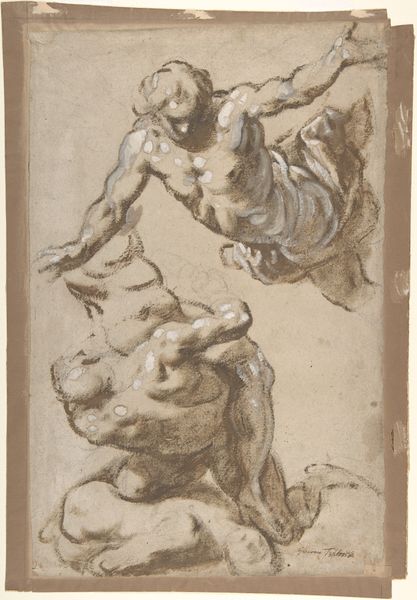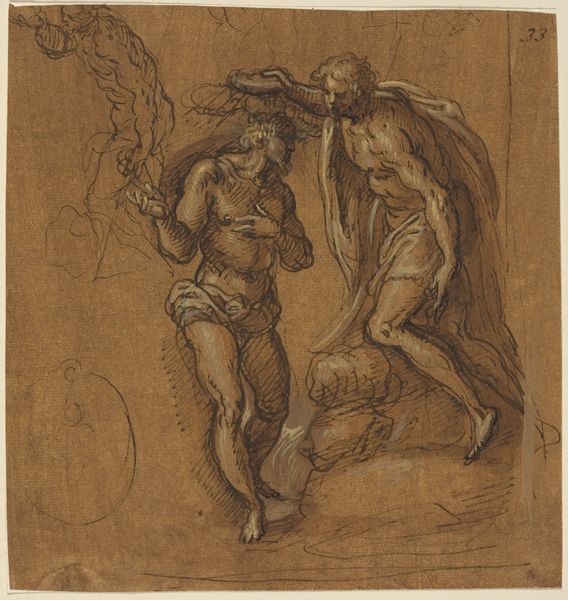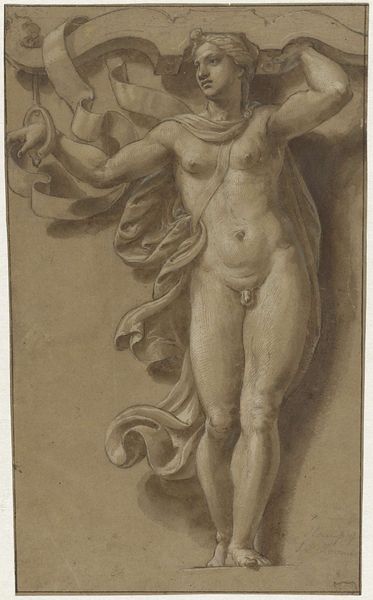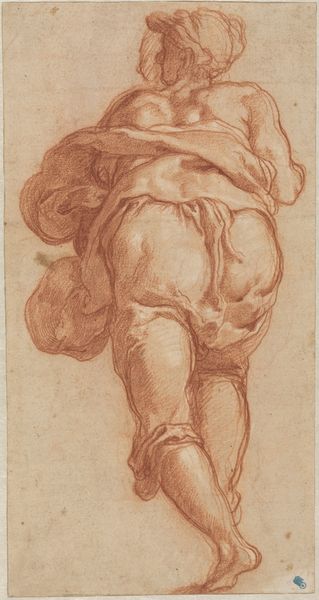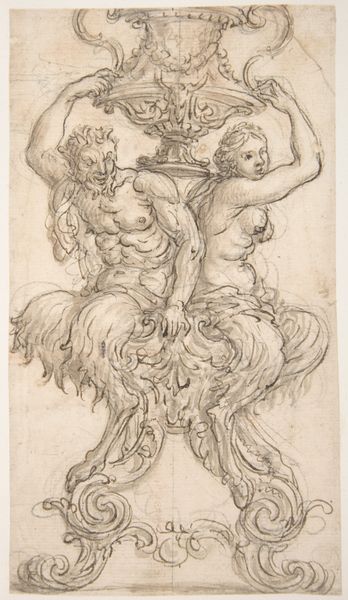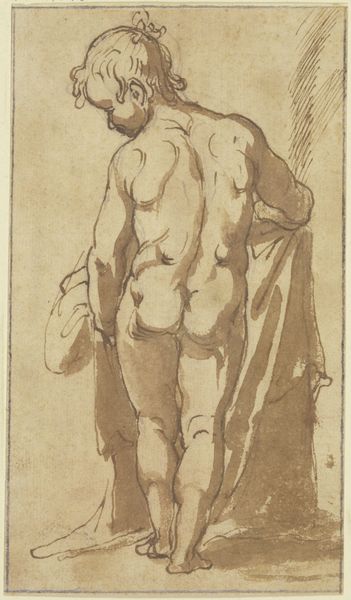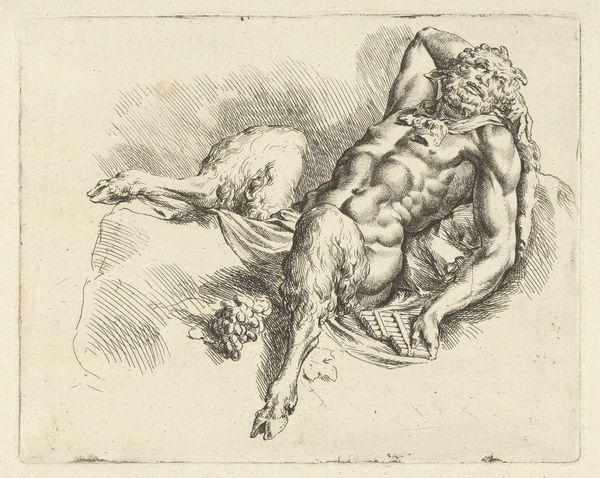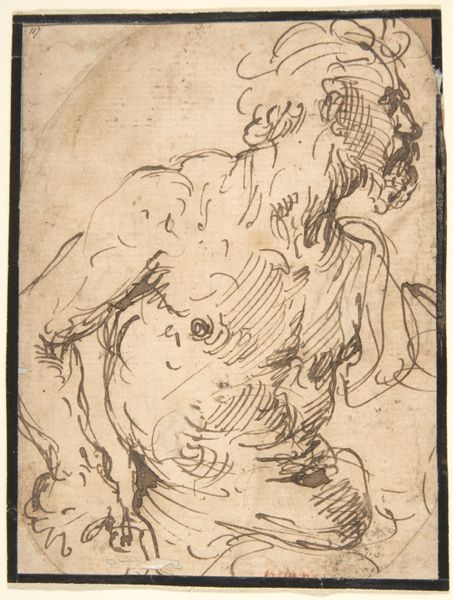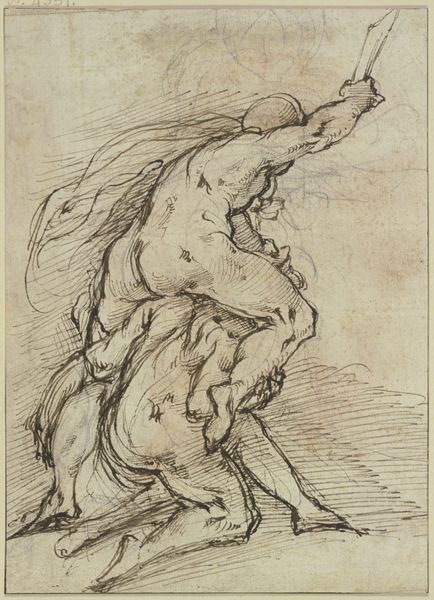
Design for a Statue consisting of a Satyr and Satyress Lifting a Vase 1652 - 1725
0:00
0:00
drawing, print, ink, sculpture
#
drawing
#
baroque
# print
#
vase
#
figuration
#
ink
#
sculpture
#
history-painting
Dimensions: sheet: 6 15/16 x 3 1/16 in. (17.6 x 7.8 cm)
Copyright: Public Domain
Editor: So, this drawing is titled "Design for a Statue consisting of a Satyr and Satyress Lifting a Vase" by Giovanni Battista Foggini, dating from around 1652 to 1725. It's rendered in ink. There's a real tension in this sketch, with the figures straining under the weight. What do you see in it? Curator: Beyond the surface level, this Baroque sketch offers us insight into the societal power dynamics embedded within the artistic production of the period. Look closely. The satyr and satyress are idealized, yet positioned in a perpetual state of labor. Doesn’t that mirroring of strength and servitude underscore the complex relationship between those who create and those who commission art, specifically within gendered and class hierarchies? Editor: That's a fascinating way to put it! I hadn't considered the act of lifting the vase as symbolic labor. Curator: And think about the vase itself – an object of beauty and status. Who benefits from the art? The commissioner, who will be seen with it! Who does the actual labour to raise it up? Those mythic creatures! Do you see in their posture any sort of acknowledgement for this work they are completing? Or do they remain enslaved to an art object? Editor: So you're suggesting that the drawing is inadvertently revealing the social structures it exists within? Curator: Precisely. Even in a design sketch like this, we can trace the power dynamics inherent in artistic patronage and the objectification, frankly, of even mythological bodies within a capitalist, and clearly gendered, framework. How does considering this affect your reading of other Baroque works? Editor: It definitely gives me a lot to think about. I see this period in art in a new way now, beyond just the surface of beauty and grandeur. Curator: Indeed. Art serves as an extraordinary source of political and social insight.
Comments
No comments
Be the first to comment and join the conversation on the ultimate creative platform.


